|
For further information about these books:
Click to View
|
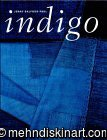
|
The blue dye indigo has been the world's
most important dyestuff for almost 5,000
years. Indigo is the first book to cover
in detail, at both the local and
international level, all aspects of the
subject - historical, agricultural, and
botanical; chemical and technological
commercial and economic; indigo's
various uses in textiles and its many
sociological, medicinal, folkloric, and
other connotations.
This volume pays particular attention
to indigo's history as a trade
commodity, including its commercial
exploitation by the European colonial
powers. The author examines the
different plant sources and compares
production and dyeing methods used in
different cultures. The various
patterning techniques used with indigo
on a wide range of textiles are
described, as are some uses of the
dyestuff in traditional medicine and
religious practices. The book also looks
at the modern application of indigo, not
least its continuing sartorial appeal,
particularly in ever-popular blue denim,
and its use by textile arts and
craftsmen. The book includes 150 color
and 50 black/white illustrations.
Read more
|
|
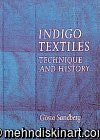
|
A fascinating historical survey and
practical application of the oldest
natural dye in use today: indigo. Visit
cultures that have used this wonderful
dye and learn the chemistry of the
dyeing process. Meet artisans from
around the world and discover their
techniques. Filled with recipes, tips,
suggestions, projects. 184 pages (44 in
color), 80 b/w illus., 6 5/8 x 9 3/8.
Read more |
|
|
|
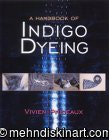
|
A Handbook of Indigo Dyeing
by Vivien Prideaux
Read more |
|
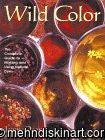
|
I am new to natural dyeing and found
this book to be extremely helpful. I
looked at many dyeing books before
purchasing this one. Unlike some other
books this one gives tons of useful
information without getting too
technical or overwhelming. Because it is
in full-color it also lets you see
examples of the colors you can achieve.
There are excellent step-by-step
instructions accompanied by photos to
guide you seamlessly through each
process.
The book starts out with an
introduction to the history of dyeing.
It then discusses, choosing equipment
and items to dye. Next, testing the
water pH, preparing fibers and fixing
colors is covered. Making and using
mordants is also covered including
timesaving tips on how to combine
mordanting and dyeing. Conveniently, two
charts help you choose the proper
mordant and assist.
Preparing plants for dyeing follows.
The processes for hot, cold and
all-in-one dyeing are then demonstrated.
A chart including all the dye plants
shows you which methods will work best
for each one. Special techniques for
dyeing with indigo, woad and safflower
are covered separately. There is also
great advice on experimenting with color
and a good explanation of how dyes are
absorbed into different fibers.
Information on the over 60 dye plants
follows. Each one has a picture of the
plant, a written description of it and
it's color along with information on
cultivation, harvesting and the dyeing
procedure. A set of color swatches
showing color with and without modifiers
or mordants is also included. Sometimes
even a second set of swatches is shown
for different parts of the plant.
If you are new to dyeing and want a
through, yet easy-to-follow guide to
natural dyeing this is definitely the
book to get. It hard to imagine with all
this information that even a more
advance dyer wouldn't find a few helpful
tips.
Read more
|
|
![Dye Plants and Dyeing [ILLUSTRATED] (Paperback)](images/0881925721.01.jpg)
|
A newly revised edition of the popular
1994 book, this clear account of plants
from which natural dyes can be obtained
will be welcomed not only by all who
work with fiber arts but also by
botanists. The authors have selected 48
plants from different parts of the world
and they describe each plant's structure
and cultivation, the history of each as
a dye source, and the best method for a
plant's use based on their own
experiments. Most well-known dye plants
are discussed, and each plant is
beautifully illustrated by Gretel
Dalby-Quenet in a full-page painting
that shows the colors the plant can
yield.
Read more
|
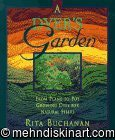
|
Rita gives CLEAR instructions on WHAT
part of the plant to harvest for which
color; which mordants (fixers) and which fibers
produce which colors; and what time of
the year to harvest the plant. In
addition, her color photos of the color
outcome are neatly stacked along the
right edge, enabling the reader to flip
through the book to see the colors.
There is also an appendix listing where
the reader can get seeds for the plants
in the book. Anyone interested in trying
GOOD dye plants (almost any plant will
give you at least tan) should have this
small, well-written and beautifully
illustrated book. Rita is one of the
best.
Read more
|
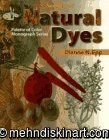
|
One of a three-volume set, (the others
are "The Chemistry of Food Dyes" and
"The Chemistry of Vat Dyes") this is an
excellent reference volume for novice
dyers, students of chemistry, and
experienced textile artists alike. It is
structured as a handbook for guiding
students through classroom exercises to
develop their understanding of the
physiochemical properties of dyes for
woolen fibers. The editor, an
award-winning high-school chemistry
professor, has an easy-going manner and
knowledgeable style that encourage
confidence in this challenging subject
among lay readers.
Read more
|
|
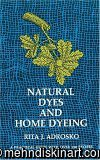
|
This is an excellent book full of
information and history of natural
dying. The book goes over the history of
natural dying and how it came about and
was used by the European Colonists in
America. There is a short history of
dying during B.C. It then goes on to
tell of how each color was introduced
and made. This section includes sketches
of the plants Indigo, Madder, Annatto
and Sumach. The second section of the
book goes over color. IT is too bad that
there are no color photos in this
section. But it details about the
variations of color one gets from home
dying, and the preparation and equipment
one needs to start. The best part of
this book, however, is the 52 recipes
for dyes made from easily obtainable
natural material. The recipes help you
to obtain the color you want by equating
this much plant plus this much moderant
on this much fiber. IT is amazing to see
how much the moderant has to do with the
final color. There are also charts for
top dying. The book doesn't have much in
the way of technique or how to prepare
different materials, but the recipes
take care of this and are worth it.
Read more
|
|
 Art Distributor
Art Distributor![]()
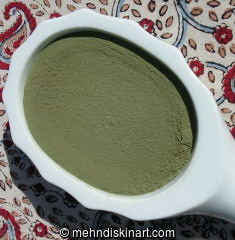




![Dye Plants and Dyeing [ILLUSTRATED] (Paperback)](images/0881925721.01.jpg)



